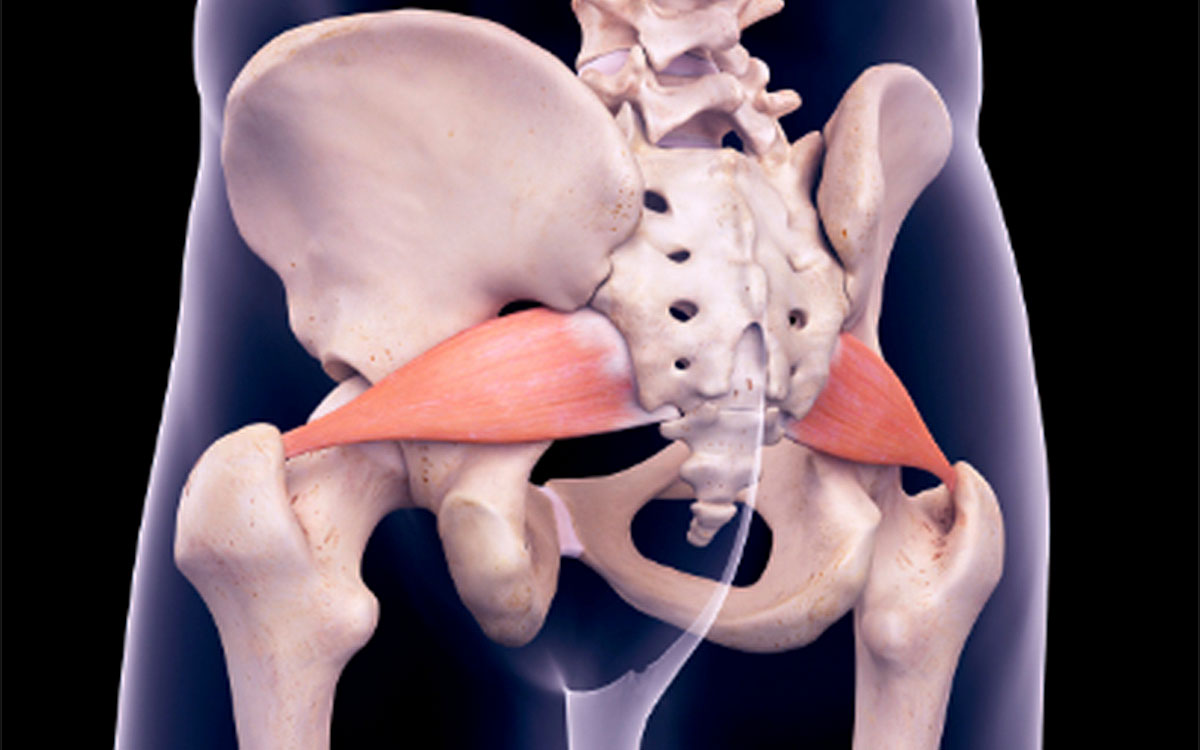Can a Chiropractor Help Piriformis Syndrome?
Sitting all day at work? Dealing with lower back pain and sciatica? It’s important to understand not only what hurts within our bodies, but why these areas are causing us pain. Individuals who work sedentary occupations or live sedentary lifestyles can develop sciatica from a condition called Piriformis Syndrome, which can oftentimes be overlooked as the causative agent of sciatica and lower back pain. So, can chiropractic be an effective treatment technique for this condition? Fortunately, chiropractic care offers a natural and effective approach to managing and resolving the symptoms associated with piriformis syndrome. In this blog, we’ll discuss what these conditions are in detail, and what you can do to help relieve these aches and pains to live a more easeful life.
What is Piriformis Syndrome?
Piriformis Syndrome occurs when the piriformis muscle, which is a small but important muscle located deep in the glute region, becomes tight or spasms, causing irritation to the nearby sciatic nerve. The sciatic nerve and piriformis muscle run side-by-side, and in small populations of people, the sciatic nerve runs through the piriformis muscle. The resulting condition, commonly referred to as sciatica (link), can lead to pain, tingling, and numbness sensations radiating from the lower back down the back of the leg/legs.
Chronic sitting, whether due to long hours at a desk job, or extended periods of driving, is a major contributor to the development of piriformis syndrome. When we sit for prolonged periods of time, the piriformis muscle becomes compressed and strained, leading to inflammation and the subsequent cascade of issues thereafter.
How Can Chiropractic Care Help?
Chiropractic care focuses on diagnosing and treating structural issues of the body through manual adjustments and other non-invasive techniques. When it comes to Piriformis Syndrome, chiropractors use several specific approaches such as:
- Spinal Adjustments
- Chiropractors perform spinal adjustments to segments of the spine that are misaligned from one another, ensuring proper alignment of the spine which can alleviate tension to the piriformis muscle. By correcting misalignments, chiropractors aim to improve nervous system flow, reduce muscle tension, and improve overall function.
- Lifestyle and Ergonomic Advice
- It’s important to understand that, aside from injury, the hobbies and habits in life can dictate how our bodies feel, function, and operate. To reduce the recurrence of Piriformis Syndrome, chiropractors provide lifestyle and ergonomic advice. This may include tips on proper posture, ergonomic workstations, and modifications to daily activities to reduce strain on the piriformis muscle.
- Corrective Exercise and Stretching Routines
- Chiropractors often prescribe a series of stretches and corrective exercises tailored to the patient’s specific needs. These exercises focus on stretching the piriformis muscle and strengthening the surrounding muscles to support proper alignment and movement.
- Myofascial Release
- Myofascial release is a hands-on technique that involves applying gentle sustained pressure into the muscular connective tissue. This technique helps to eliminate pain and restore motion by relaxing the tight muscles of the body and improving blood flow.
How Effective is Chiropractic Care?
There are several studies and patient testimonials (link to review?) to corroborate how effective chiropractic care can be for the treatment of Piriformis Syndrome. Here’s Why:
- Holistic Treatment: Chiropractic care addresses the entire body, taking into account the underlying issues that are contributing to Piriformis Syndrome
- Personalized Care: Our uniqueness is not something to overlook. Chiropractors create treatment plans that are tailored to each patient’s specific needs based on their lifestyle, severity of symptoms, chronicity of the issue at hand, and the general needs of the patient.
- Relief (FINALLY): Many patients report significant symptom relief and improved mobility after chiropractic adjustments. By removing nervous system interference and balancing the structures of the body, the soft tissues and nerves become free to operate at their best, typically relieving the symptoms being experienced.

What Else Can I Do to Help?
Working with your chiropractor can provide faster results and a smoother journey to resolution. Performing the following stretches and lifestyle changes can provide a huge advantage to the treatment plan.
-
Piriformis Stretch
- How To: Seated on the floor or in bed, have both legs extended outwards in front of you, spine straight. Cross one leg over the other, bending at the knee and placing the crossing-leg foot at the level of the knee, on the outside of the leg. Pull the bent knee towards your chest, keeping your spine straight and moving slow. You’ll feel the stretch in a specific spot on the outside of the bent-leg’s glute. Hold this position for 30-60 seconds, rest, then repeat again for 2-4 rounds, and then switch legs. You can perform this a few times a day, anywhere you’re able to.
- Benefits: Stretching chronically tight piriformis muscles can help to alleviate tension and pain levels at that muscle. Stretching can provide relief from pain, balancing the pelvis, combating chronic seated posture, and bring ease to the sciatic nerve.
-
Pidgeon on a Surface
- How To: Find a bed or mid-thigh level surface. Place one foot on the surface, the othe firmly planted on the floor. Allow the raised leg to externally rotate down so that the outside of the knee and leg is contacting the surface/bed. Slowly end forward, as you feel the stretch in the glute musculature. Hold this position for 30-60 seconds, and switch legs to repeat. Perform this in the mornings and nights, and through the day if possible/needed.
- Benefits: Our chronic sitting position leaves our hip joints and glute muscles chronically stiff and tight. Stretching them can provide relief to the nerves exiting the spine to the lower body, the muscular tightness of the lower body, and possibly lower back stiffness and pain.
-
Alternating Sit-Stand or Frequent Walks
- Being in a sedentary position for prolonged periods of time isn’t going to make the piriformis muscle very happy, so getting up to move every 30-45 minutes is ideal to keep the lower body moving, the musculature in the glute region active and functioning, and the motion of fluid in the lower body flowing. If your office space allows for a standing desk, having a timer every 45-60 minutes to switch from seated to standing is a great way to mitigate the prolonged period of sitting, and if you’re a driver, getting out to stop frequently at bathrooms or parks to stretch your legs will prove to be effective in the long-run. Remember: your habits have brought you to this state right now, so not changing them and expecting different results for your system isn’t going to set you up for success.
-
Lacrosse Ball Rollout/Massage Gun Manual Therapy
- Using tools/toys to release the musculature of the glute region, specifically the piriformis muscle, will be effective at managing the symptoms of Piriformis Syndrome. Helping to combat a seated posture, these tools can access trigger points within the musculature to relieve tension and uneven pulling It’s important, however, to note that these muscles attach to the bone structure of our bodies, so if there’s any misalignment in our skeletal system, lacrosse balls, massage guns, and other tools/toys will likely only provide temporary relief until the structure is realigned.
Traditional Allopathic Treatment Methods
Chiropractic care tends to be the last resort for most individuals as they choose the allopathic path prior to choosing a holistic approach. The following are typical treatments that are prescribed to individuals with Piriformis Syndrome that choose an allopathic approach:
- Medications: Anti-inflammatory drugs or muscle relaxants are administered or prescribed to reduce pain and inflammation. Inflammation is our body’s response to heal a certain area or region, and pain is often the signal to change something in our lives. Medications can certainly be necessary in some conditions, but are often administered loosely without taking into account the full picture of what’s going on.
- Injections: Corticosteroid injections are often administered to decrease inflammation around the piriformis muscle. It’s often reported by individuals that the effectiveness of these injections vary widely, and often don’t last long-term.
- Surgery: In rare cases, surgery may be considered to relieve the pressure on the sciatic nerve. Although rare, there might be steps to take prior to surgery to either eliminate the need for the procedure altogether, or at the very least allow for a speedier recovery afterwards.
How Koru Chiropractic Can Help
Piriformis Syndrome can significantly impact your quality of life, but chiropractic care offers treatment options to help. With its focus on spinal alignment, muscular balance, holistic well-being, and nervous system flow, chiropractic care addresses the root cause of Piriformis Syndrome, providing patients with effective relief and long-term solutions. At Koru Chiropractic, our holistic, root-cause-oriented doctors aim to truly get to the bottom of the issue at hand. We’re here to support you through your journey, so if you’re ready to make a change and experience the benefits of chiropractic, complete the form below to schedule a consultation with one of our doctors.

 Reviews
Reviews 